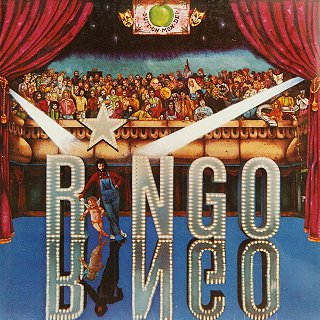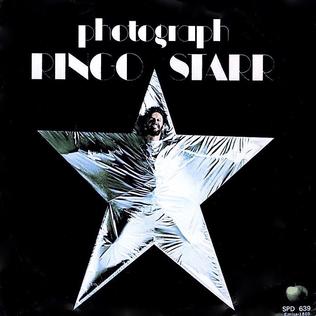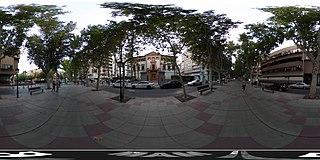A photograph is an image created by the effect of light on a light-sensitive material.
Contents
Photograph or photo may also refer to:
A photograph is an image created by the effect of light on a light-sensitive material.
Photograph or photo may also refer to:
Focus may refer to:
iPhoto is a discontinued digital photograph manipulation software application developed by Apple Inc. It was included with every Mac computer from 2002 to 2015, when it was replaced with Apple's Photos application. Originally sold as part of the iLife suite of digital media management applications, iPhoto is able to import, organize, edit, print and share digital photos.
Zoom may refer to:
Time is the continued sequence of existence and events, and a fundamental quantity of measuring systems.
The apex is the highest point of something. The word may also refer to:
The Odyssey is an ancient Greek epic poem attributed to Homer.

Ringo is the third studio album by English musician Ringo Starr, released in 1973 on Apple Records. It peaked at No. 7 on the UK Albums Chart and No. 2 on the Billboard 200 and has been certified platinum by the RIAA. In Canada, it reached No. 1 on the RPM national albums chart.
Pure may refer to:

"Photograph" is a song by English rock musician Ringo Starr that was released as the lead single from his 1973 album Ringo. Starr co-wrote it with George Harrison, his former bandmate from the Beatles. Although they collaborated on other songs, it is the only one officially credited to the pair. A signature tune for Starr as a solo artist, "Photograph" was an international hit, topping singles charts in the United States, Canada and Australia, and receiving gold disc certification for US sales of 1 million. Music critics have similarly received the song favourably; Stephen Thomas Erlewine of AllMusic considers it to be "among the very best post-Beatles songs by any of the Fab Four".
Digital "darkroom" is the hardware, software and techniques used in digital photography that replace the darkroom equivalents, such as enlarging, cropping, dodging and burning, as well as processes that do not have a film equivalent.
A camera raw image file contains unprocessed or minimally processed data from the image sensor of either a digital camera, a motion picture film scanner, or other image scanner. Raw files are so named because they are not yet processed, and contain large amounts of potentially redundant data. Normally, the image is processed by a raw converter, in a wide-gamut internal color space where precise adjustments can be made before conversion to a viewable file format such as JPEG or PNG for storage, printing, or further manipulation. There are dozens of raw formats in use by different manufacturers of digital image capture equipment.
An image is an artifact that depicts visual perception, such as a photograph or other two-dimensional picture.

Digital photography uses cameras containing arrays of electronic photodetectors interfaced to an analog-to-digital converter (ADC) to produce images focused by a lens, as opposed to an exposure on photographic film. The digitized image is stored as a computer file ready for further digital processing, viewing, electronic publishing, or digital printing. It is a form of digital imaging based on gathering visible light.

"Back Off Boogaloo" is a song by English rock musician Ringo Starr that was released as a non-album single in March 1972. Starr's former Beatles bandmate George Harrison produced the recording and helped Starr write the song, although he remained uncredited as a co-writer until 2017. Recording took place in London shortly after the pair had appeared together at Harrison's Concert for Bangladesh shows in August 1971. The single was a follow-up to Starr's 1971 hit song "It Don't Come Easy" and continued his successful run as a solo artist. "Back Off Boogaloo" peaked at number 2 in Britain and Canada, and number 9 on America's Billboard Hot 100. It remains Starr's highest-charting single in the United Kingdom.
A black light is a lamp which operates near the ultraviolet range of light

VR photography is the interactive viewing of panoramic photographs, generally encompassing a 360-degree circle or a spherical view. The results is known as VR photograph, 360-degree photo, photo sphere, or spherical photo, as well as interactive panorama or immersive panorama.
Thomas Edward Wilkes was an American art director, designer, photographer, illustrator, writer and producer-director.

The Apple QuickTake is one of the first consumer digital camera lines. It was launched in 1994 by Apple Computer and was marketed for three years before being discontinued in 1997. Three models of the product were built including the 100 and 150, both built by Chinon; and the 200, built by Fujifilm. The QuickTake cameras had a resolution of 640 x 480 pixels maximum.

Rob Shanahan is an American photographer and rock drummer known for his concert photography and portraits of celebrities. He has been the preferred photographer of ex-Beatles drummer Ringo Starr since 2006.